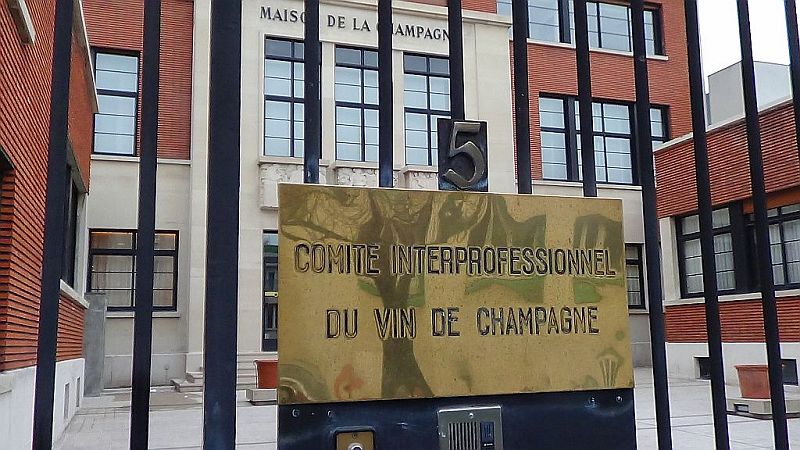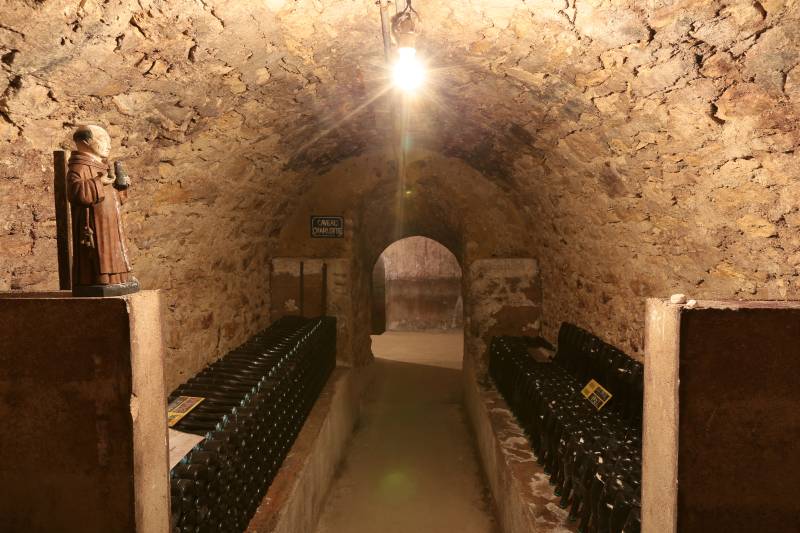Bunches, bunches everywhere, nor not a bunch to press
Readers who are not familiar with the inner workings of the champagne industry may be surprised by the title of this article, which is an echo of lines from The Rime of the Ancient Mariner.
They may also be surprised to learn that in Champagne grape growers (vignerons) are often not allowed to pick all the grapes that Nature has provided on the vines – at least not to press those grapes and turn them into champagne.
In this post I’ll explain the thinking that lies behind this seemingly strange situation.
Very broadly speaking there are two types of champagne maker: on the one hand, there are the well-known houses (maisons) whose names you may well have heard of; there are some two or three hundred of these and they account for by far the lion’s share of all the bottles sold around the world but they own a relatively small share of the 34,000 or so hectares of vines planted in Champagne. They own so few vineyards relative to the number so bottles they sell that they are obliged to buy grapes from third parties.
Those third parties are the many thousands of grapes growers who own the lion’s share of the vineyards. These plots are often very small indeed, but nevertheless the price of grapes being as high as it is in Champagne, selling the grapes from even a small plot can provide a healthy side income and if you own a larger plot then the sale of grapes becomes your main source of income.
The maisons are great at sales and marketing but own few vineyards, whilst the vignerons own the vineyards but lack the skills and resources to sell anywhere near the number of bottles that the maisons can do.
Given this situation, you can see that the two categories of actor in Champagne have a sort of symbiotic relationship – each one needs the other in order to survive and prosper.
So far so good and the interests of both side are aligned.
However….
Things get a little more complex and even tense when it comes to deciding on two important issues: the price each year per kilo of grapes and the weight of grapes that is harvested each year.
As regards the price of grapes, the maisons want to buy grapes at the best possible price to keep their costs of production down whilst the vignerons want to sell at the highest price they can get.
To manage this potential conflict of interest a governing body called the Comité Champagne (CIVC), was established many years ago to allow actors on both sides to express their needs with a view to reaching a happy compromise.

Until a couple of decades ago, the price of grapes each year would be set by Comité Champagne, but nowadays it is the market and the individual agreements between buyers and sellers that determine the price.
A similar conflict of interest can exist when it comes to the size of the harvest and here several factors are at play.
First, the weather influences the size of the harvest. In record years the vines can be laden with up to about 18,000 kg of grapes per hectare, whilst in poor years yields can be as low as 4,000 kg and if a disaster such as a severe hail storm were to strike, some vignerons can be left with no harvest at all.
Broadly speaking however, an average yield in Champagne is 10,000 kg per hectare which, as an aside, is enough to make about 8,500 bottles of champagne.
But things are not quite so straightforward as you might imagine because the state of the global champagne market now comes into consideration.
For twelve months or more sales of champagne have been in decline and as sales slowdown the stock of bottles in the masons’ cellars increases. There’s a cost associated with keeping bottles in the cellars for several years whilst they nature and the bigger the stock, the higher the cost.

Right now, the last thing the maisons want is to buy large quantities of grapes and turn them into bottles of champagne that they won’t be able to sell quickly.
Meanwhile, the vignerons have a different point of view. Whilst they understand that it is in no one’s interest to produce more bottles than can be readily sold, they still need to live and so they are seeking to pick and sell as many grapes as can be absorbed by the market and in this sort of situation, the vigneron’s estimate of the correct amount of grapes to pick is usually higher than that of the maisons.
This is where the Comité Champagne comes into the picture to find a compromise and this year, with about a month to go until the harvest starts, they have announced a limit 9,000 kg per hectare on the amount of grapes that can be picked and turned into champagne.
There’s one last turn to the story.
Any grapes on the vines in excess of 9,000 kg may be picked and pressed, but the juice must be held back in reserve and not yet bottled as champagne. This juice can be released in future as and when market conditions require it.
That then, is why vignerons in Champagne cannot always use all the grapes that Nature has provided on the vines (at least not immediately). It’s a system that has stood the champagne industry in good stead for many years and has served to look after the interests of everyone concerned – not an easy task but one which seems to work.
If you have any thoughts or comments on this or anything else to do with champagne, please email me at This email address is being protected from spambots. You need JavaScript enabled to view it.

